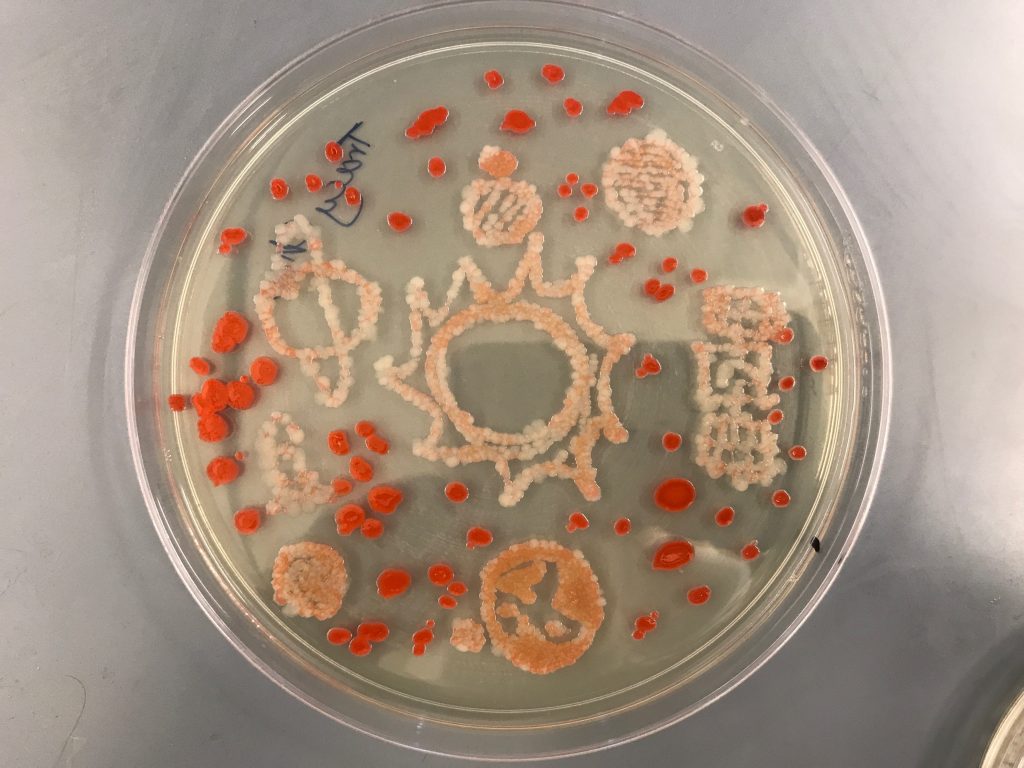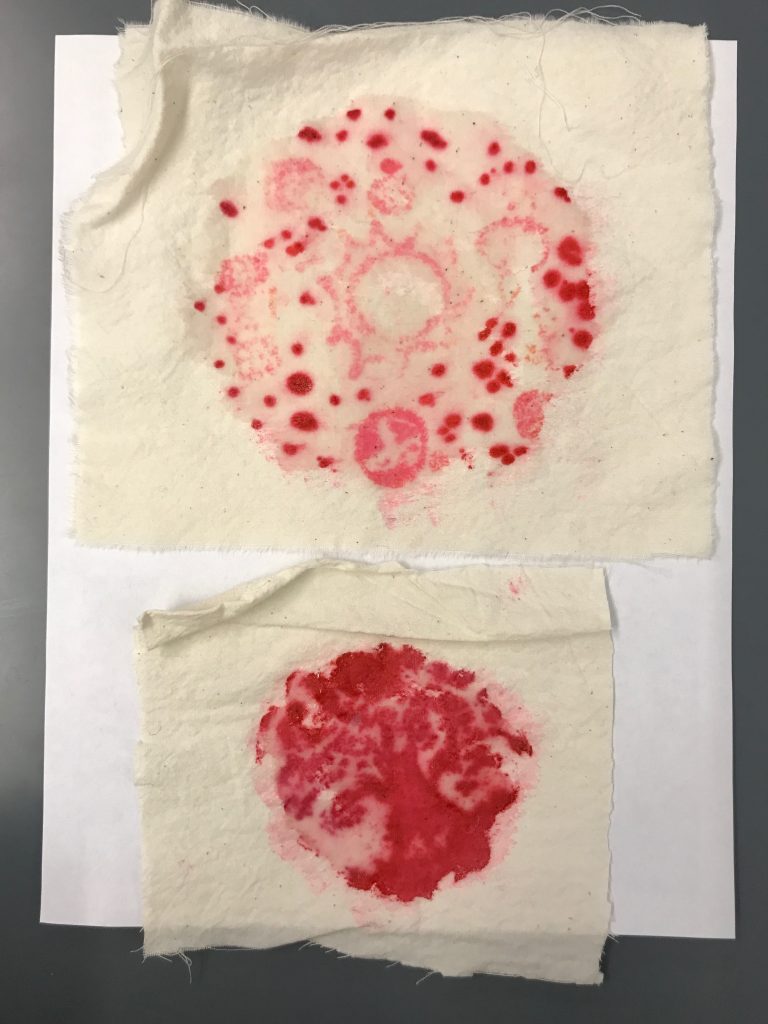Documentation
Reflections
(2) I chose this title because at the end the two patri dishes that ended up successful happened to be the two related to my earth and sustainability theme.
(3) The patri dishes did not come out has I hypothesized. 2 out of the 3 patri dishes are supposed to have a background color of purple, however, purple did not show up on both of the dishes for some reason. Because is also an issue for many other students, I believe the paint brushes were either contaminated, or the red bacteria just took over the purple. Another failure is that the lines I drew for the pattern play patri dish did not show up. I instead ended up with these white dotted pigments that are supposed to be yellow. Finally, I noticed that all the lines I drew did not form lines, but instead formulated dotted lines, which pretty much made my work not as good as I expected.
(4) Comparing the three patri dishes from start to finish, I definitely began the process with a simpler design using only one color and straight lines. Moving on to the second and third patri dishes, I attempted to mix and put colors together and did ended up getting one successful duo-color design. However, because the color of the fabric was so light, the yellow didn’t really successfully transfer onto the fabric.
(5) While I was examining other people’s work today, I definitely saw some successful designs. One patri dish in particular was painted in the color blue, which I really liked. If I had the chance to do the design again, I would really like to ask the designer what he/she did to achieve in growing the color blue. Additionally, I also want to ask the lab instructor if there are other ways to grow the bacterias rather than just using the round patri dishes. Can they be grown in larger scale? Are there other colors?
(6) The most important thing I think I have to change next time is realizing that when the bacterias grow, they don’t appear as lines but rather dots. I think knowing this before starting the project is really important so that I can design a piece accordingly. Another thing I would do differently next time is to be aware of the red bacteria, which has a strong tendency to take over other colors.
(7) I think the worst but also best thing about bacteria painting is that you don’t get to see the result until one week later. Because of the duration it takes for the bacteria to grow, the painter will either be very happy or very upset. Another component unique about bacteria painting is that it is painting with something alive, which requires the painters to be even more careful when applying and designing the artwork. To sum up, both the surprise element and the living element are what makes bacteria painting special.
(8) I think the word that describes bacteria painting the best is biotechnology. Normally, when we hear about biotechnology, we can only think of the application of it on hefty subjects such as medicine and agriculture. Therefore, it is especially surprising to be that something as simple as dyeing clothes can also be substituted by biotechnology. The word I would use to describe the overall practice is perseverance. I think it is a form of art that takes a lot of patience and trial and error, which makes it especially beautiful.
(9 & 10) Bacteria painting meets all but 2 criteria from Long Life Design: 1. Repair, and 6. Safety. Because it is something that requires hand-drawing and artistic creativity, I don’t think it will be easily repairable unless if it is shipped back to the original painter. However, if the bacteria are told has a kit for other people to paint by themselves, I can definitely see how components such as brush and patri dishes can be recycled and reused. In terms of Safety, because the lab instructor mentioned how some genotype of the bacteria may cause people of a certain body type to be sick or have a weaker immune system, I don’t think it will be suitable for everyone, but at the the majority.



